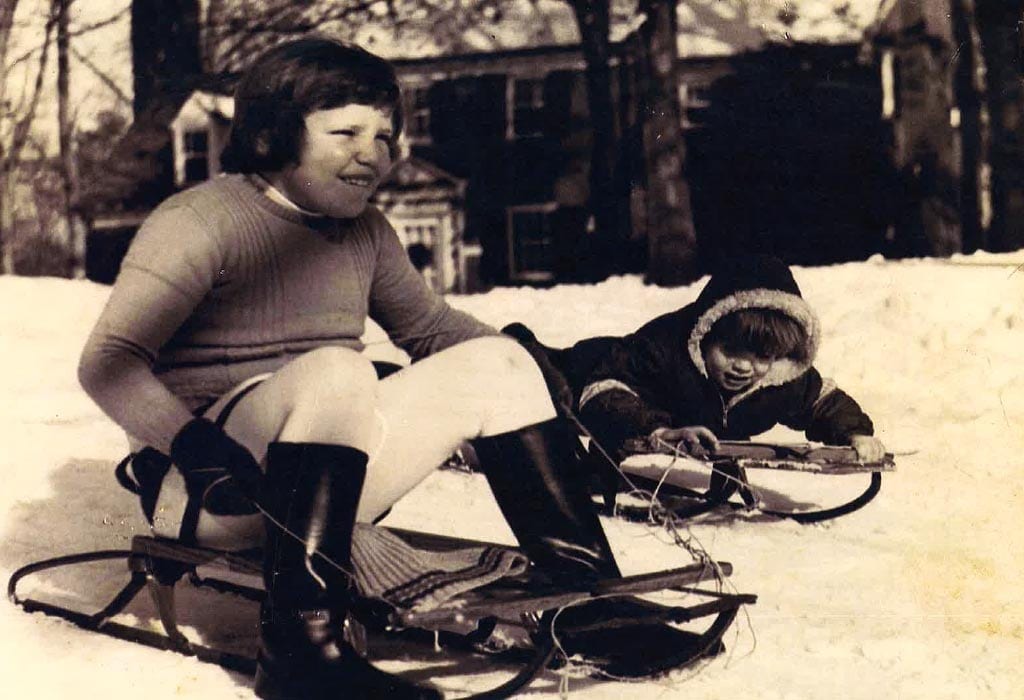For a snow-loving creature like me, this has been the winter of my discontent. I live at the foot of the Sangre de Cristo Mountains in northern New Mexico, and up in the mountains at 11,000 feet, where there is usually four to eight feet of snow, the ground is nearly bare. Instead of delighting in the joys of telemark skiing, I have been meditating on the loss of winter in the Southern Rockies.
While this is, of course, just one winter, all the climate models conclude that this winter’s exceptional warmth and dry conditions are going to be more and more common in the Rocky Mountain West and across the globe.

A snowless landscape in winter: a sad, but increasingly common occurrence in northern New Mexico.
But I don’t depend on snow for my very survival. Canada lynx do—and their survival just became a lot more difficult, not only because of disappearing winters, but also due to the denial of science. That’s because the Trump administration just announced plans to strip away Endangered Species Act protections for the elusive and threatened snow cat, despite scientific evidence that lynx still need protections.
The U.S. Fish and Wildlife Service issued a report on January 11 that concluded the lynx, which rely on snowshoe hare as their primary source of food, no longer warrant the safety net the Act affords. As has been the case with most decisions from the Trump administration, this one also featured a piece of denial: ignoring the full effects of climate change.
The Service’s recent report contradicts its December 2016 assessment, in which government biologists predicted “that lynx populations and habitats in the [lower 48] will decline over time largely as a result of continued climate warming.” That report went on to conclude that “the probability of losses in resilience, redundancy, and representation puts the Canada lynx [population in the lower 48] at increasing risk of extirpation through the end of this century.”
Lynx are a snow-dependent species. Snow-dependent species are, obviously, significantly impacted by a climate that has less snow. But science and facts are little deterrent to Interior Secretary Ryan Zinke, whose home state of Montana may have the only population of lynx in the lower 48 that survives to the next century. Lynx in the states of Washington, Colorado, Minnesota, and Maine probably won’t be so lucky, as scientists believe the species is unlikely to make it to the next century absent federal protection.
The lynx’s story is just the latest example of the Trump administration exploiting the vulnerable to enrich the powerful. From the new tax law, to the attacks on our health care system, to targeting the Dreamers who came to this country as young immigrants, it is the vulnerable among us whom this president relentlessly targets.
That target is now on the lynx, which was first protected under the Endangered Species Act in 2000. Federal safeguards have frustrated industry groups, including primarily the timber, motorized recreation, and trapping industries. If federal protection were to be stripped away, states would have the authority to re-open lynx trapping and allow destruction of lynx habitat to the benefit of industry. And WildEarth Guardians’ efforts to restrict trapping and fight lawless logging would be much more difficult.
Science and facts are little deterrent to Interior Secretary Ryan Zinke, whose home state of Montana may have the only population of lynx in the lower 48 that survives to the next century.
But it is the loss of snow that is the greatest threat to lynx. With their large, snowshoe-like paws and thick fur coats, lynx are built for chasing down snowshoe hare in winter’s deep snows.
Notwithstanding the occasional “bomb cyclone” to remind us of winter’s ferocity, snows are coming later, departing earlier, and decreasing in amount. One recent report from the western United States found that winter, in the form of the snow line where rainfall becomes snow, has moved uphill by an average of 236 feet each year over the last decade. Shrinking snowpack, whether in Montana, Maine, or Minnesota, means smaller snowshoe hare populations, and that means fewer lynx.
In this warming environment, one of the best ways to give lynx a chance at survival is not only stopping the burning of fossil fuels as quickly as possible—it’s also retaining the lynx’s Endangered Species Act protections. That would mean less trapping, less logging, and fewer snowmobiles running roughshod over lynx habitat.
While there is still a long way to go before Canada lynx are officially removed from the list of endangered species, the die has been cast. Undoubtedly, the Trump administration will soon propose to remove protections for the threatened lynx. When that decision is finalized, we will challenge it in court.
In the meantime, lynx continue to hunt for snowshoe hare where winter survives.

In my youth, there was always enough snow for sledding.
I have never seen a lynx, but I have always thought of myself as a snow creature. As a child growing up in Washington, D.C., many of my fondest memories are of playing in snowstorms. While those memories are now distant, the feelings of joy, exhilaration, and wonder still stir in me every time I see a snowflake in the forecast, not to mention falling snow. For those of you who grew up with snow, I imagine it’s the same for you. Falling snow is a magical part of life.
The campaign to ensure the survival of Canada lynx, just like the effort to protect the polar bear, is not just about the intrinsic value of these magical creatures. It’s also about preserving a sense of awe and wonder in the wildness of winter.
